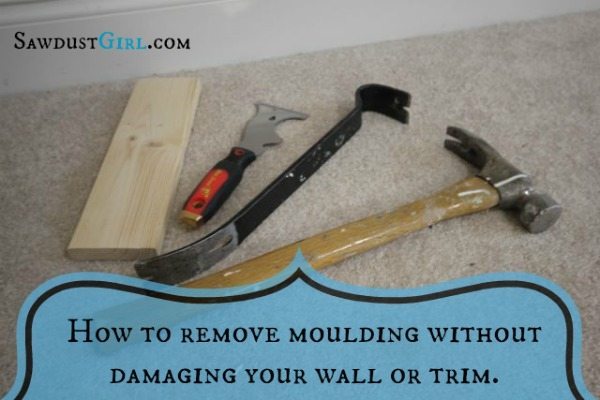
Start at one end of. Start at one end of.

Plastic bristles can melt when dipped in stripper The trick.
How to remove trim molding. Step 1 Remove all furniture in front of the trim. Do some research and find the start of all your trim pieces. It is better to start at an edge and work your way inStep 2 Cut through the caulk and paint at the top or side of the trim with a utility knife.
Slit it directly where the wall meets the trim. You will be less likely to tear up strips of drywall as you pull up the trim1 X Research sourceStep 3 Ready your tools. Wear safety glasses in case wood breaks.
Wear gloves in case of. Slide a flexible 3-in. Putty knife behind the trim and pry out slightly.
With the knife in place wedge in a pry bar and pry the trim out an inch. If it seems like the trim is about to crack insert a second putty knife between the pry bar and the trim. Move to the next stud and repeat the procedure.
Trim is often times caulked or painted to the wall. Score the seam between the trim and the wall with a utility knife. Start at an End.
Work Your Way Down. Remove or Pound in the Wall Nails. Start by using a sharp utility knife to cut through the layer of paint where the molding meets the wall.
Next Tap a thin pry bar between the molding and the wall. Once the molding has been loosened from the wall remove the pry bar and drive in wood shims to widen the gap. Latex paint creates a seal between trim and walls so if thats what was used take a 6-inch utility knife or in a pinch a 5-in-1 painters tool and carefully score along the length of the seam.
Lay a towel on the floor next to the portion of T-molding youll be working with. Position a crowbar over the towel. If the T-molding is held to the floor with nails position the crowbar next to a nail.
As you use the crowbar to pry the T-molding away from the floor the towel protects the floor from the metal of the crowbar. Pry the trim from the wall with the nails still attached. If the trim hasnt completely separated from the wall at this point gently pull the trim with both hands away from the wall.
If you are less concerned with damage you can pull more quickly and aggressively. Once the trim is removed you may see some remaining nails in the wall. How to remove baseboard without damaging wall or moldingCheck out my weekly videos on my NEW Channel.
Gently work a 6-inch metal putty knife behind the baseboard and wiggle the tool while pulling mostly forward to loosen the pins or finishing nails holding the trim on the wall. Start at one end of. Heat one end of the body molding with a hair dryer until it is hot.
Lift the end of the body molding with a gloved hand. You might need to use a plastic putty knife to start the lift. Slowly pull the body molding off the panel of the vehicle by pulling it back over itself and away from the vehicle.
Prime the trim and add fresh paint for reinstallation. Reusing the trim reduces waste and saves money. Plus if you label the boards as you remove them they will be nicely pre-cut and ready to assemble without the hassle of measuring and cutting new pieces.
Side Note 1 Exterior Trim. Get Every Detail Right. How to Remove Door Stop Molding.
Posted by Jennifer Branett Feb 1 2021 Doors and Windows Indoor Window Door Repair 0 Being a parent means you will have to come up with an innovative idea for something in the middle of the night because your child has an assignment the next and obviously they forgot to tell you the whole day. My brother in law loaned me a few specialty trim tools but they dont look to be for the exterior trim pieces window crank clip removal trim pad removal windshield trim removal. The molding is clipped on you need to use a small thin putty knife to gently lift the molding off the clip.
Insert the flat end of a short pry bar in between the molding and the window frame so that it rests against the side of the metal putty knife. The putty knife blade will protect the vinyl window. Insert Trim Puller Now you just need the Trim Puller and ahammer to get it started.
One whack of the hammer and the Trim Puller slidthrough the rest of the caulk and down behind the baseboard. Nodamage to my baseboard. Brush a paint stripper onto the molding.
Next apply paint stripper to the trim or molding with a natural-bristle paintbrush. Plastic bristles can melt when dipped in stripper The trick.